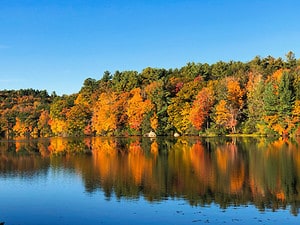With scorching hot summers and devastating tornadoes, Fairview, AL, is no stranger to extreme weather. Although residents get to enjoy mild winters, the threat of natural disasters stays present for the majority of the year.
Whether you’re visiting or live in Alabama yourself, we’re taking a look at one small town that is most likely to be struck by a twister. Don’t worry if you live in Morvin, AL, as this is the town least likely to experience severe weather.
Keep on reading to find out how tornadoes impact wildlife and what you can do to stay safe.
Tornado Index
The Federal Emergency Management Agency is also known as FEMA. It is a division of the Department of Homeland Security. Fema works to aid citizens in emergency and catastrophe preparedness, response, and recovery.
The National Risk Index is a database that FEMA monitors as a component of its responsibilities. The regions in the US that are most vulnerable to 18 different natural hazards are shown through this dataset and web application. This includes tornadoes.

The National Weather Service issues tornado watches and warnings in areas with impending storms.
©Conceptual Art/Shutterstock.com
A town’s risk of encountering a tornado in comparison to the rest of the United States is shown by its Tornado Risk Index score. A Tornado Risk Index score is made up of a number of parameters, such as a tornado exposure value, a tornado yearly frequency value, and others.
When viewed alongside other regions of the United States, the index also calculates projected structure and population loss from tornadoes based on previous considerations. Here’s what the index scale can look like when seen on a map.
| Color | Likelihood of Tornado |
|---|---|
| White or grey | No rating |
| Dark blue | Very low |
| Light blue | Relatively low |
| Yellow | Relatively moderate |
| Orange | Relatively high |
| Red | Extreme |
History of Fairview, AL
In the state’s north-central region, in Cullman County’s northeast, is Fairview. This town is most likely to be hit by a devasting tornado. In order to construct farms, people initially came to the Fairview region in the 1840s.
A Methodist Episcopal church nearby inspired the name change from Lawrence Chapel to Fairview, which happened most likely in the late 1890s. John A. Donaldson, who had also started a post office at Arkadelphia, Cullman County, in 1855, served as the region’s first postmaster.

Fairview is located about 30 minutes south of Huntsville, AL.
©SevenMaps/Shutterstock.com
Following the establishment of a school in Fairview, Donaldson went on to work as a captain in Gen. Joseph Wheeler’s Confederate cavalry detachment. He also became the town’s first educator.
The community had its first cotton gin in 1905. There were also many sawmills, a general shop, and other facilities before the beginning of the 20th century. The first high school opened its doors in 1923, while the first telephone line was constructed in Fairview in 1919.
The State Board of Education granted the high school accreditation in 1925. In 1932, a tornado demolished the school’s second floor along with the elementary school. Fairview became a company in 1968.
In Fairview, Cullman County’s first vocational agricultural department was founded in 1921, and it was instrumental in the development of the neighborhood.
Extreme Weather in Fairview
There is a very high risk of tornadoes in Fairview, AL. The biggest tornado to have hit the Fairview region was an F5 in 1974, which resulted in 272 injuries and 28 fatalities. Since 1950, the small Alabama town has seen nearly 200 tornadoes!
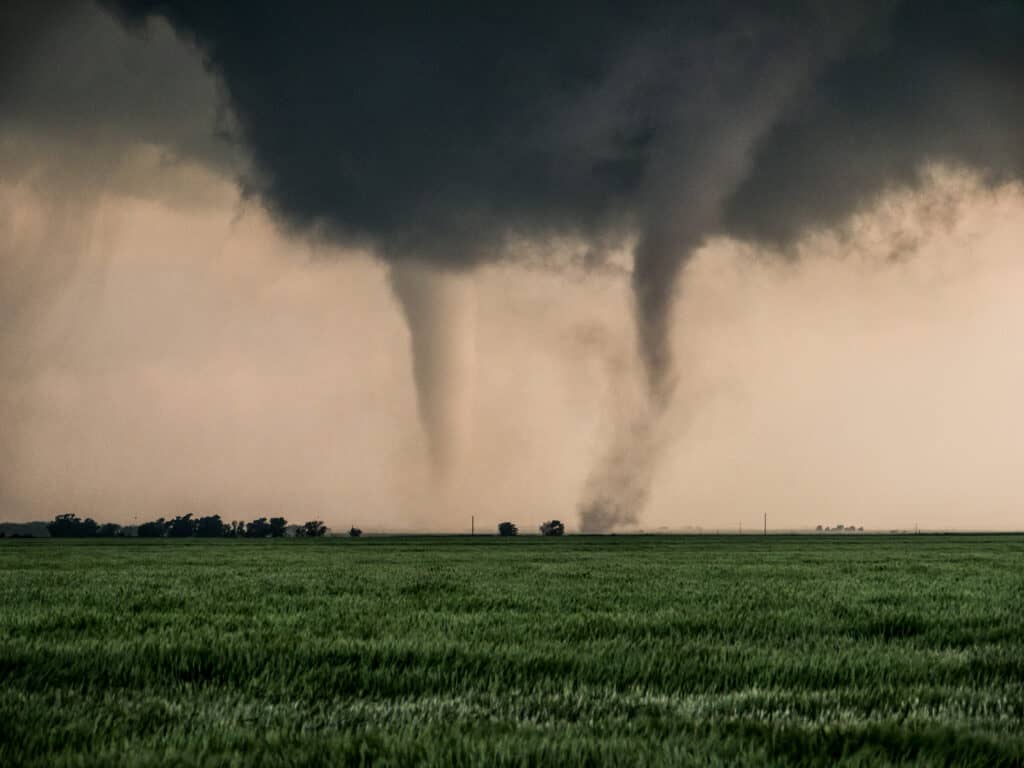
Tornadoes range from EF0 to EF5.
©Eugene R. Thieszen/Shutterstock.com
In April of 2023, just weeks before writing this article, the town saw an EF4 tornado. A long-track tornado crossed Cullman County from southwest to northeast before turning into Morgan and Marshall Counties.
On the County Road 310 side of Smith Lake, there was some minor damage. Two homes were damaged and large pieces of the two residences were not recovered, just north of Fairview between county road 1559 and country road 1564.
Major damage happened near the city of Cullman in a broad area between a quarter of a mile to half a mile north of Highway 69, around Fairview and the boundary between Cullman and Morgan counties. Shortly after leaving Cullman County, the tornado momentarily entered extreme southeast Morgan County close to the city of Hulaco.
Where is Fairview, Alabama Located on a Map?
The city of Fairview is the place in Alabama most likely to experience damaging tornados. Fairview is located 30 miles south of Huntsville in Cullman County.
Population of Fairview
As of 2023, 558 people call Fairview, AL, home. In 2009, residency peaked at 606 people. Although it’s gone down slightly over the years, there seems to be an upward spike in residency.
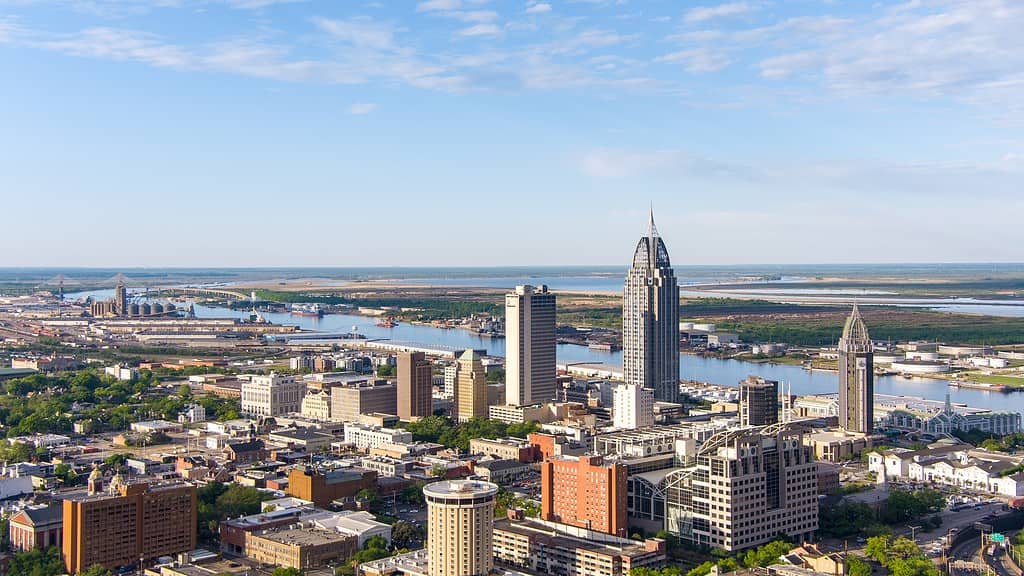
Mobile, AL, is one of the most popular cities in the state.
©George Dodd III/Shutterstock.com
It is the 322nd largest city in Alabama. Fairview’s population has grown by 2.76% from the most current census, which showed an estimated population of 543 in 2020. It’s now rising at a pace of 0.9% yearly. Fairview, which extends over three miles, has 206 inhabitants per square mile.
The poverty rate in Fairview is 47.48% and the median household income is $50,265. In this small Alabama town, the average age is about 32.5 years old. The cities demographics look as follows:
- White: 85.69%
- Asian: 7.46%
- Native American: 3.04%
- Two or more races: 2.89%
- Other race: 0.76%
- Black or African American: 0.15%
- Native Hawaiian or Pacific Islander: 0%
Wildlife in Fairview
Like other states in the nation, Alabama has plenty of incredible wildlife. Alabama’s true state animal is the North American black bear. This southern state and West Virginia share this state mammal.

It’s hard to be scared of black bears when their cubs are so cute.
©Critterbiz/Shutterstock.com
Throughout Alabama, black bears were once uncommon, but their number has recently increased. Alabama’s official land and water critter is the red hills salamander. This unusual animal lives in massive backwoods gorges and can grow 11 inches long.
The loss of its habitat poses a threat to the red hill salamander. The state bird is the northern flicker, also known as the yellowhammer. Alabama is alluded to as the Yellowhammer State, getting its nickname from this fluttering critter.
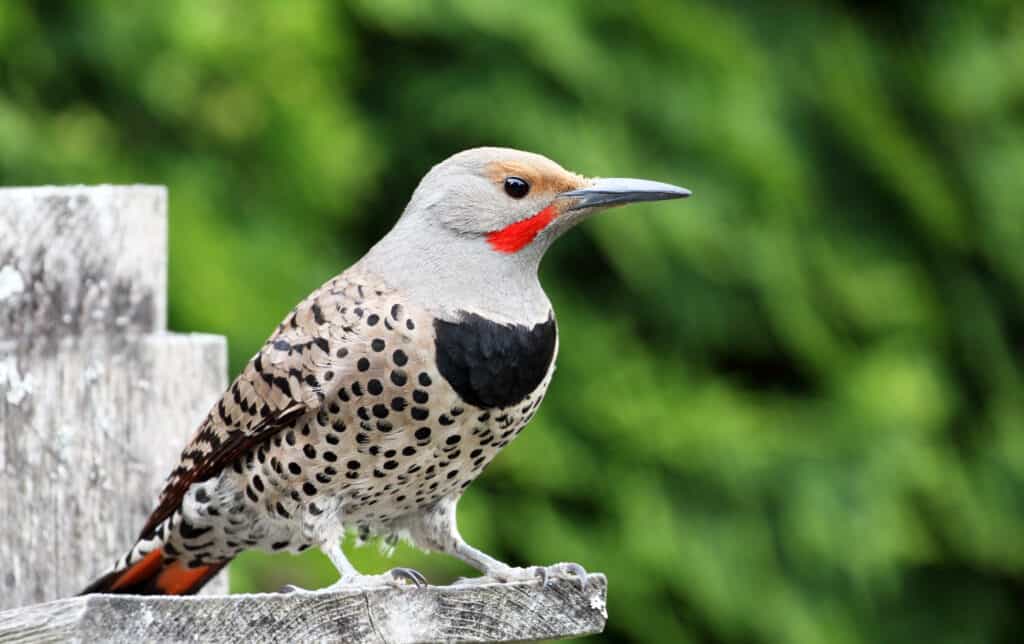
Despite their name, you won’t find any yellow on their plumage.
©Birdiegal/Shutterstock.com
Largest Animal in Alabama
The American Alligator is the largest animal in Alabama. These apex predators typically inhabit wetlands, lakes, reservoirs, rivers, and swamps. Huntsville, about 30 minutes from Fairview, AL, has seen an increase in the number of alligator sightings despite the fact that alligators prefer the southern part of the state.
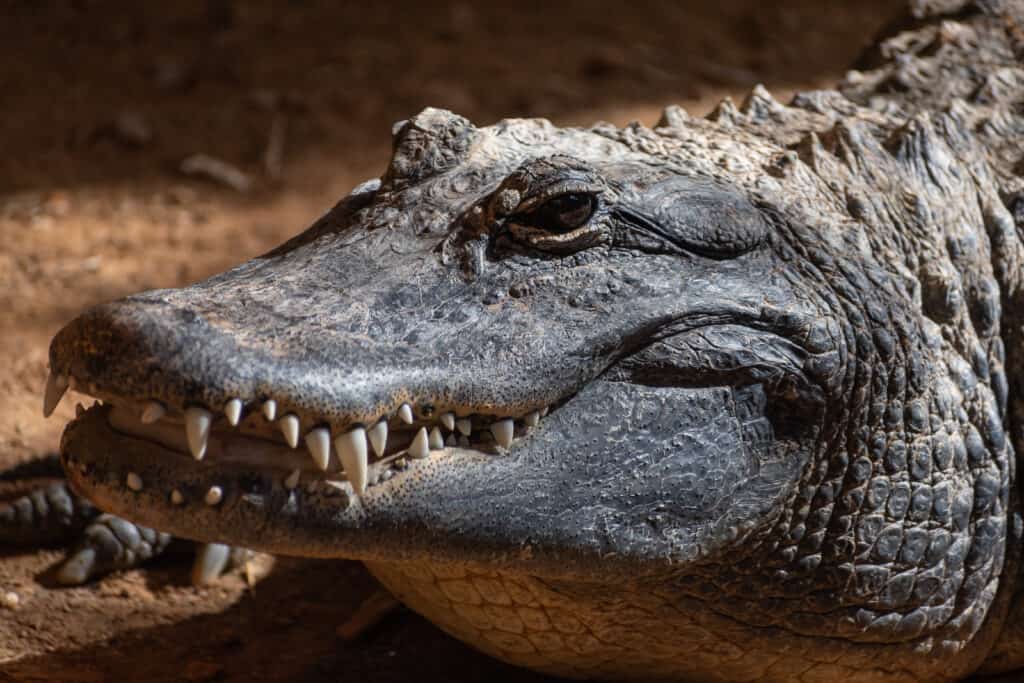
American
alligators
love the warm weather that Alabama provides.
©iStock.com/CoinUp
It is found in the lower part of the state and can grow to be 15 feet long and weigh 1,000 pounds.
Rarest Animal in Fairview
Although deer, foxes, and birds are commonly found throughout the small town, cougars are an entirely different story. During their time in the state, the wild felines, which are known to be solitary by nature and can weigh 232 pounds and measure seven feet in length, once lived there.

Cougars are slowly reclaiming their territory in Alabama.
©iStock.com/Nemyrivskyi Viacheslav
However, extensive hunting and encroachment on their natural habitat led to the extinction of their population by the 19th century. With that being said, some experts have spotted a few cougars around the state, suggesting their population is rising in Alabama.
Dangerous Animals in Fairview
Unforanetly, not all animals are friendly and cuddly creatures. The brown recluse spider is an eight-legged creature generally tracked down all through the state. This little spider is for the most part found in the northern part of Alabama.
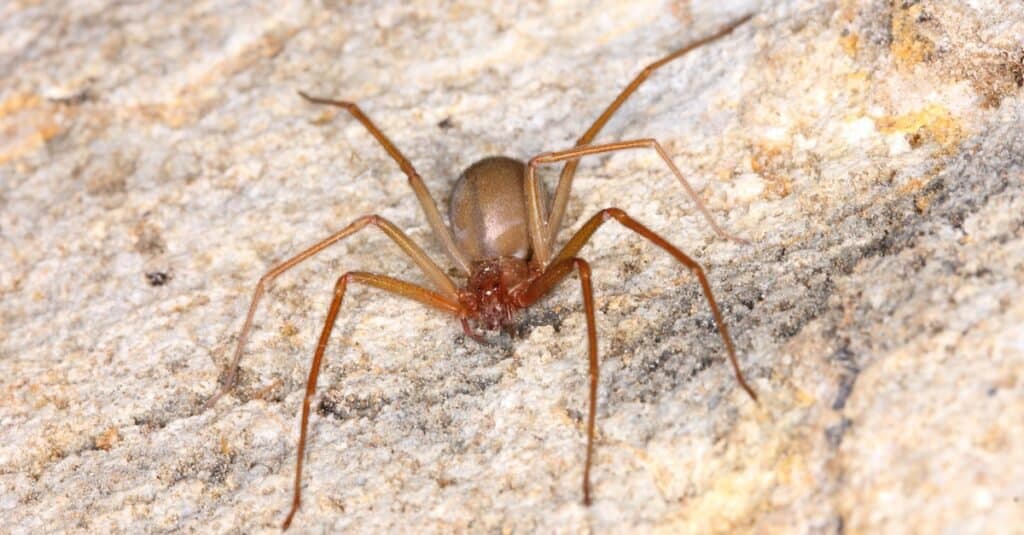
A bite from a brown recluse can cause a massive skin ulcer.
©Pong Wira/Shutterstock.com
They like warm places like boxes and bedding. Their bite causes extreme torment, and their venom can lead to tissue death. Alabama has six venomous snake species as well. These include the cottonmouth or water slipper, which is the main venomous water snake in North America. Fortunately, if you seek prompt medical attention, their bite won’t kill you.
How Tornadoes Impact Wildlife
Tornadoes affect wildlife just as much as they do civilization. Any natural tragedy necessitates considerable reflection, especially when dealing with the death toll. Ultimately, our curiosity leads us to discover more effects, such as the species and nearby ecosystems that the storm had left in its wake.
A tornado leaves nothing but damage in its wake. The food chain is impacted by the death of the animals. creatures are capable of killing other creatures since they depend on them for food and energy to survive.
How do the local flora, birds, and other animals fare when a storm has ripped through?
Birds
The good news for birds is that they can spot slight pressure changes before strange weather develops. But there is one thing that birds are better at than we are, and that is getting away. Many birds are thought to move out of the path because they are intelligent enough to do so. On the flip side, humans often prefer to wait things out.

Tornadoes are least likely to strike during the evening and overnight hours.
©Lioneska/Shutterstock.com
You would observe numerous logs laying on the ground and undergrowth and stumps remaining where trees had been broken off after a tornado had ripped across a thick forest. As a result of this, the ground receives a lot of light, which causes smaller saplings to take over the formerly wooded areas and eventually grow into a thicket.
Different species can move into the region as the ecosystem changes from forest to shrub.
Dogs
According to research, canines are more sensitive than people to variations in the static electric field and barometric pressure. Both of these things indicate the impending arrival of a storm.
Because of their far better senses of smell as well as hearing than human beings, canines may also be aware of a storm before humans do. Your pooch will undoubtedly be on alert during a tornado because of Rover’s enhanced senses and humans’ uneasy mood during a storm.

Dogs can be just as scared of severe weather as we can.
©BIGANDT.COM/Shutterstock.com
Therefore, without some experience, you shouldn’t anticipate him to joyfully trot into cover. On occasion, practice holding up in a secure location to help your furry friend become accustomed to the action.
Cats
It just so happens, felines respond to varieties in pneumatic force all the more unequivocally. Indeed, because of their incredible senses, they can recognize cautioning indications of approaching storms. The way a feline’s inner ears are designed might give way to how they detect an unexpected drop in air pressure.

Cats’ senses improve as they grow older.
©Yarkovoy/Shutterstock.com
A cat is furthermore more attuned to smells and sounds compared to humans. As a result, your pet can detect a thunderstorm’s rumble before you do. Similarly, your cat is more inclined to detect the smell of approaching rain or the metallic odor left behind by lightning.
Livestock
Who can forget that iconic scene in Twister where the cow flies across the sky? This leaves us wondering if livestock can predict severe weather like cats, dogs, and birds can.
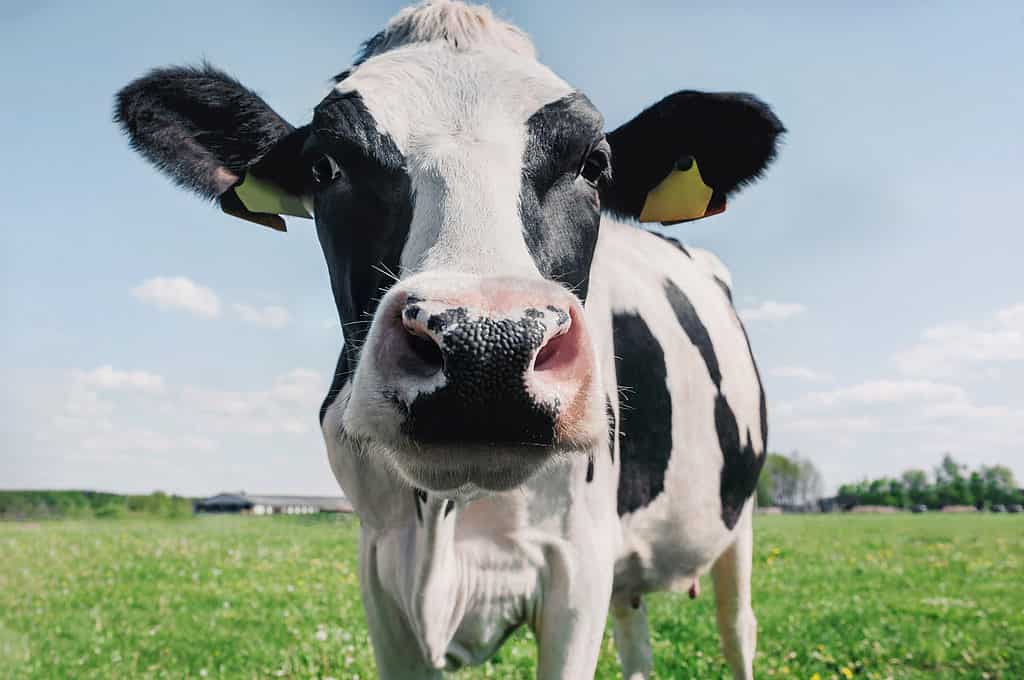
More needs to be done to find out if cows can sense an incoming storm.
©Alena Demidyuk/Shutterstock.com
There’s an old farmer’s tale that suggests cows lie down before severe weather hits. Surprisingly, there hasn’t been enough research to tell us whether or not this rings true.
Environment Effects of Tornadoes
In comparison to other types of severe weather, tornadoes span relatively smaller areas, but their impact is typically more brutal, bringing damage to property, destruction of the environment, and even fatalities.
Although most individuals are cognizant of the obvious impacts of such a catastrophe, the reality is there’s plenty more to learn about. Here are some ways tornadoes affect the environment which they destroy.
Pollution
Not only do tornadoes cause trees to be uprooted and cars to roll, but they also cause pollution in the environment. This is because they bring in a lot of dust from dry areas. Tornadoes knock down buildings, creating even more of a mess.

Dust and smoke from pollution irritate the lungs.
©Pensioner/Shutterstock.com
The dust has a negative impact on lung function and raises the risk of lung cancer. In turn, it causes heart issues and persistent irregularities in the respiratory system of locals.
Additionally, tornadoes can cause dangerous chemicals to mix with trash. This contributes to environmental pollution by polluting the soil and water.
Hazardous Waste
The hazardous household waste, which includes cleaning products, vehicle products stored in garages, and workshop supplies, has an immediate impact on the homes that have been destroyed by tornadoes.
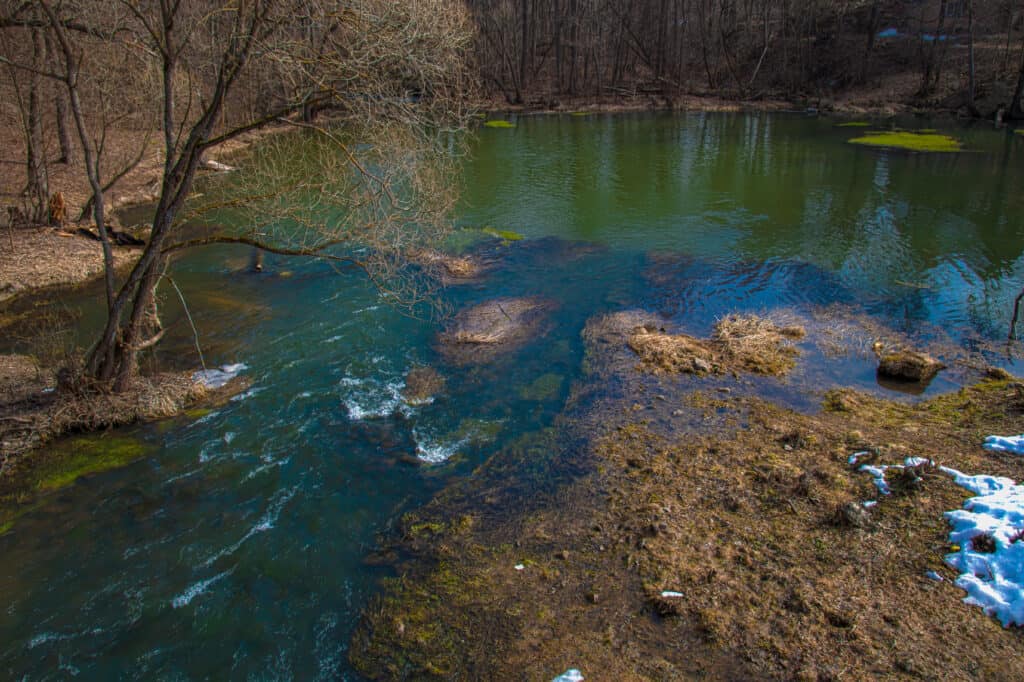
Hazardous nuclear waste is often dumped in bodies of water, causing additional harm.
©Gans340/Shutterstock.com
As a result of the destruction, these materials become exposed and pose a threat to the city’s plants and animals. Additionally, they contaminate the water and soil, making the environment toxic.
Flash Flooding
During tornadoes and thunderstorms, flash flooding accounts for the majority of fatalities. The environmental damage caused by flash flooding is obvious; destroying the food supply and habitats of animals.
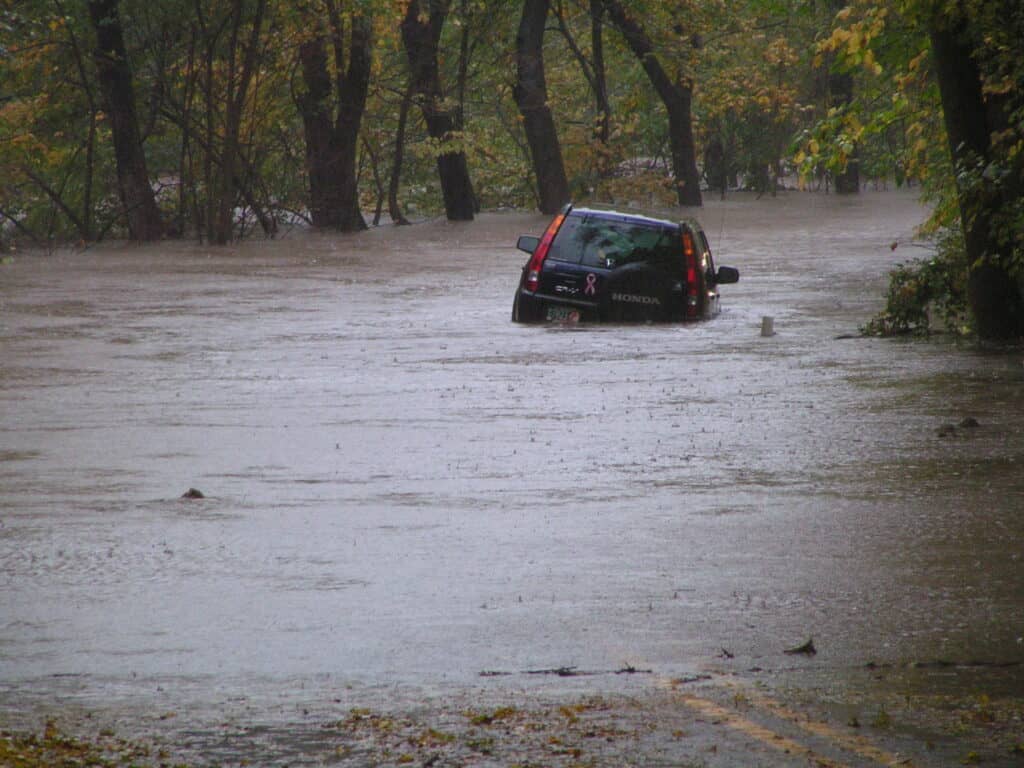
Never drive in any type of flood, especially after a tornado.
©BONNIE WATTON/Shutterstock.com
Additionally, it introduces hazardous substances and chemicals into the homes of nearby birds and animals.
Asbestos Debris
Believe it or not, tornadoes bring a risk of asbestos debris. Asbestos is one of the most hazardous materials produced by humans, and it becomes a threat after a tornado. A lot of asbestos is released into the air and ground when homes and garden sheds are destroyed by a tornado.
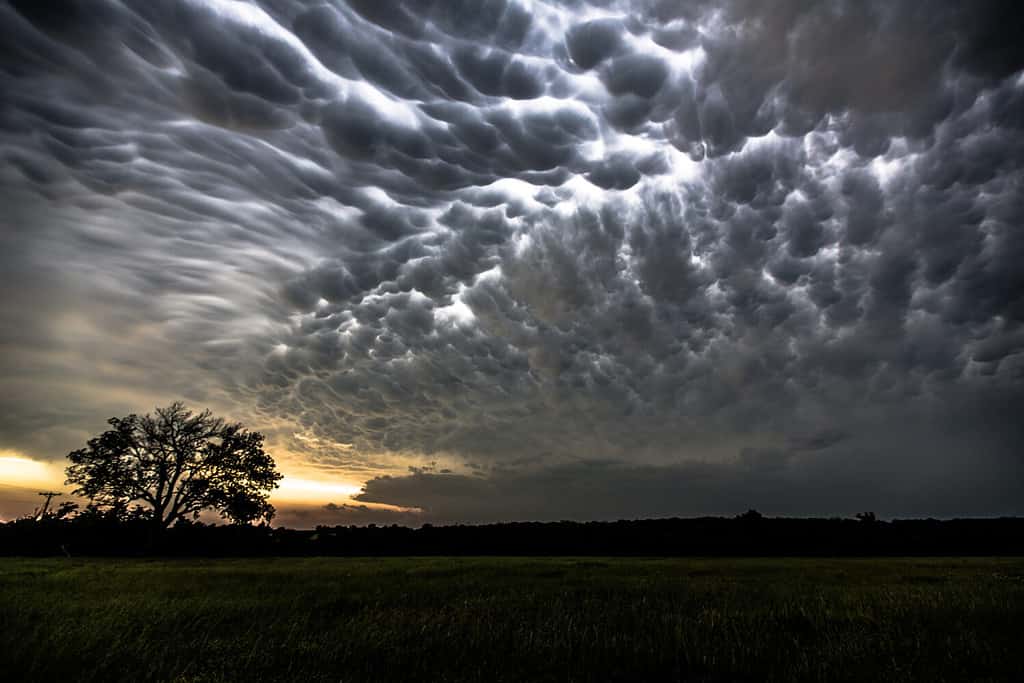
Wall clouds become noticeable as a tornado is about to form.
©Cammie Czuchnicki/Shutterstock.com
This turns into an exceptionally noxious material to people, and can likewise be an extraordinary risk to the climate by making a great deal of hurtful asbestos in the dirt. This jeopardizes the water supply and the habitat of native animals.
Additionally, asbestos can be thrown far away by tornadoes, fragmenting it into smaller pieces that are difficult to locate during cleanup.
Vegetation Damage
Cyclones are adequately strong enough to remove trees and vegetation along their way. Farmers who live in areas that have experienced severe tornado outbreaks have stated that it will take at least five years to replant trees and regain their cost-effectiveness.
Additionally, rubble that is tossed around during the storm can harm plants. Vegetation that took 50 years to grow can be destroyed in seconds by a tornado. In 1953, approximately $4.3 billion worth of vegetation is destroyed by one powerful tornado.

The EF5 tornado that hit Joplin, MO on May 22, 2011, was the deadliest U.S. tornado since 1947.
©Melissa Brandes/Shutterstock.com
Weathering, deposition, and erosion are also caused by tornadoes. The tornado typically tosses large trees from the ground to a completely different location… shredding the wood in the process. Landscaping and soil erosion could result from this loss of vegetation.
Additionally, topsoil, which is essential for providing nourishment to plants, can be washed away by a powerful tornado, which can result in the destruction of healthy soil.
Writer’s note: I was in an EF5 tornado that hit Joplin, MO. There were trees launched into curbs. 2×4 pieces of wood were stuck in the cement on the sidewalks. That’s how powerful these storms can be!
The photo featured at the top of this post is © Minerva Studio/Shutterstock.com
Thank you for reading! Have some feedback for us? Contact the AZ Animals editorial team.





